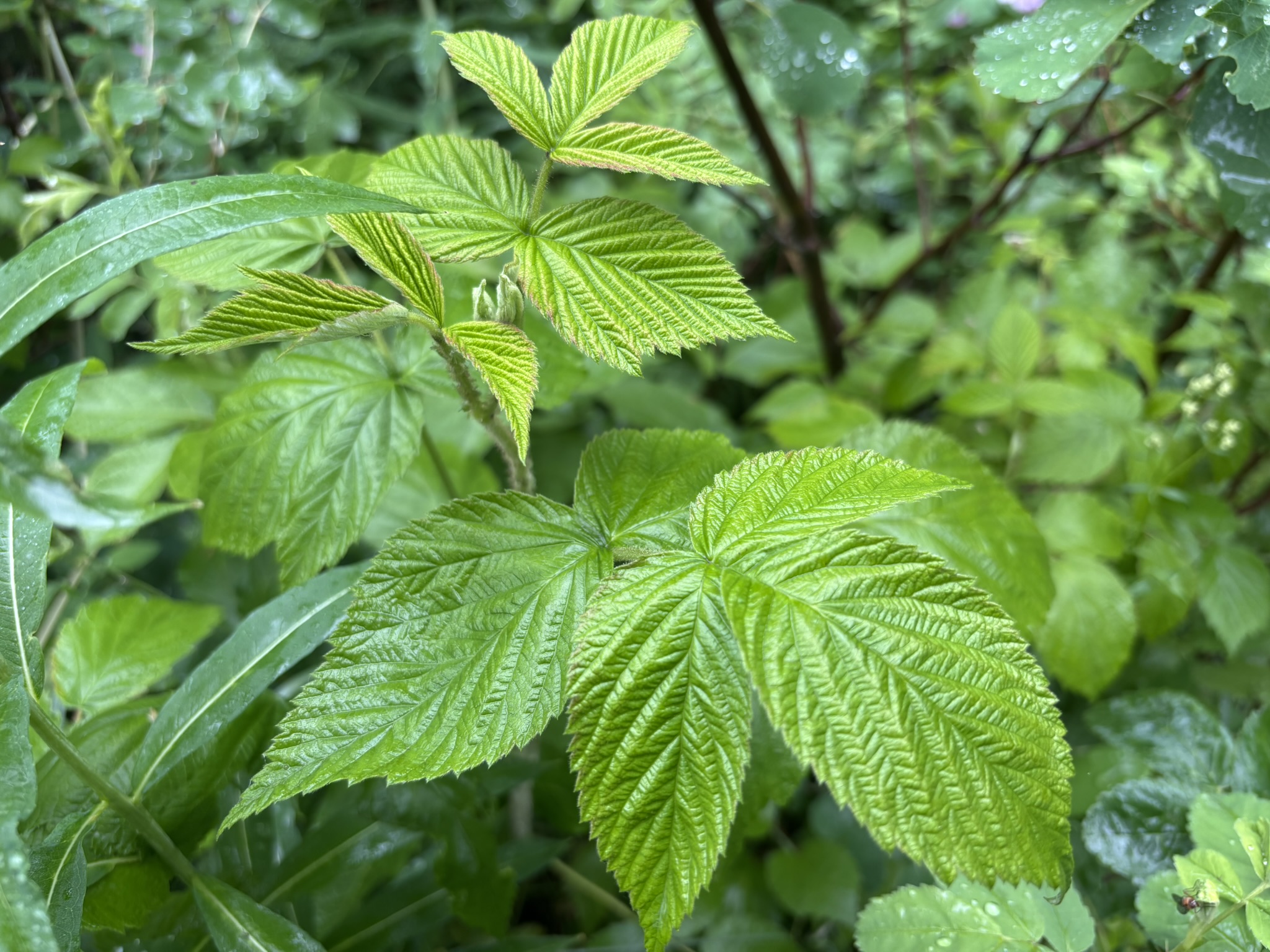If you are a woman or know a woman, you need to be harvesting red raspberry leaves!
Simply harvesting the leaves, giving them a light rinse and setting them to dry is all that needs to be done. I love this hanging dryer because it holds a ton, keeps your treasures contained and separated, and can be used anywhere. A dehydrator like this one is handy, but they aren’t able to hold as large of quantities.
The best time to collect leaves is earlier in the season but they can be picked at any time. Selecting leaves from the top first-year growth is best and this also helps the plant to produce more fruit in the coming years.
A few important things to remember when harvesting:
- Be sure to harvest from an unpolluted area. Stay away from locations that are sprayed with herbicides or pesticides or are near busy roads or industrial areas. *Always ensure you have permission to pick if you are on private land.
- Harvest from healthy plants, leaving enough behind to ensure the plant can continue to grow and thrive.
- Only take what you will be able to process.
- Be positive of the identity of the plant you are harvesting.
Raspberry leaves boast many essential minerals like calcium, iron, magnesium, potassium, sodium, and vitamins A and C. They also contain trace minerals that are equally important for bodily functions; chromium, cobalt, manganese, phosphorus, selenium, silicon, tin, aluminum, ash, zinc, and B vitamins and are a good source of antioxidants.
Teas or infusions are the most common ways to consume this amazing medicine, but tinctures can be used as well. Tea can be made from fresh or dried leaves, while a tincture is more effective when made with dried.

A glass of tea can soothe an upset stomach and clear up diarrhea, especially in children. An infusion can be used as a mouthwash for treatment of bleeding gums, cankers, or ulcers.
Red raspberry leaves have an abundance of medicinal uses, mostly relating to women’s reproductive health. It seems the raspberry leaves can be beneficial throughout nearly every stage of a woman’s life.
Fragarine is a compound found in the leaves that is said to help tone and strengthen the muscles of the uterus and pelvic region. This muscle support is beneficial for regulating menstrual cramps, preparing for conception, preparing for birth, and healing postpartum.
During pregnancy, red raspberry leaf tea can provide nourishment while easing morning sickness. Consuming one cup per day during the first trimester, 2 cups per day during the second trimester, and 3 cups per day during the third is a common suggestion among holistic practitioners. It is said that the tea strengthens the pelvic muscles making contractions and pushes more effective during labor and also helps with pain relief, healing, and clotting after birth.
The high vitamin and mineral content make the tea a nourishing drink for new moms, which is then passed to the breastfed baby.

I have personally enjoyed many of these benefits and continue to consume raspberry leaf tea and infusions regularly. A personal favorite is combining this amazing medicine with nettle, peppermint, and fennel in a delicious, nourishing infusion that I like the call She Tea.
This post contains affiliate links, which means I make a small commission at no extra cost to you.


